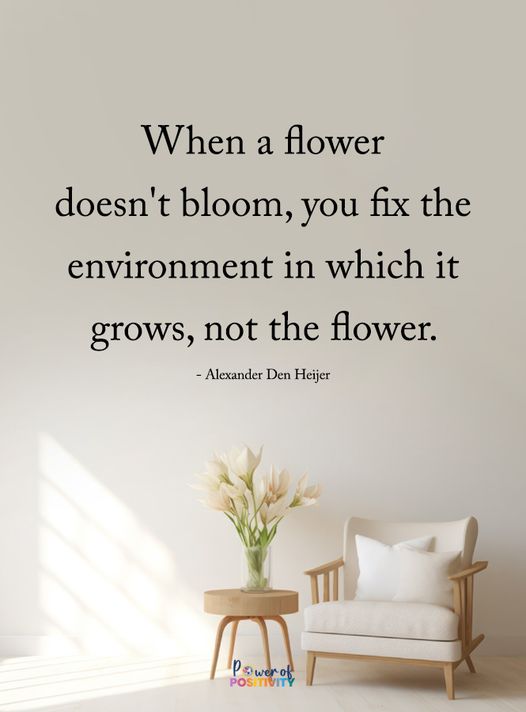 Living green isn’t just a trend; it’s a conscious choice to protect our planet. At its core, going green means making intentional decisions to reduce waste, conserve resources, and tread lighter on the earth. And the best part? Even small changes—like using reusable bags or biking to work—can have a big impact over time.
Living green isn’t just a trend; it’s a conscious choice to protect our planet. At its core, going green means making intentional decisions to reduce waste, conserve resources, and tread lighter on the earth. And the best part? Even small changes—like using reusable bags or biking to work—can have a big impact over time.
In today’s world, where environmental concerns are pressing, adopting a greener lifestyle isn’t about perfection. It’s about progress. Everyone can play a part, no matter how small. Whether you’re switching to eco-friendly cleaning products or planting a garden, each step counts toward a healthier future for both you and the planet.
Think going green is expensive or complicated? Not true! It’s easier than you think, and I’ll walk you through practical tips to make the shift without overwhelming yourself.
From cutting energy costs to reducing single-use plastic, you’ll find sustainable habits that fit your lifestyle.
The Benefits of Going Green
Going green is more than just an environmental movement; it’s about adopting mindful practices that improve well-being, save money, and protect the planet.
These benefits extend beyond reducing your carbon footprint—green living brings healthier lifestyles, financial savings, and a sense of purpose by contributing to a sustainable future.
With small, intentional changes, everyone can make a difference, from individuals to large businesses.
 Protecting Ecosystems and Biodiversity
Protecting Ecosystems and Biodiversity
Adopting green habits—like minimizing waste and reducing chemical use—preserves wildlife and supports healthier ecosystems. Sustainable practices, such as recycling and planting native species, reduce habitat destruction and prevent pollution from harming marine and terrestrial life. Improved Health and Well-being
Improved Health and Well-being
Using eco-friendly products reduces exposure to harmful chemicals, improving air quality at home and lowering the risk of respiratory problems. Additionally, outdoor activities like gardening and walking promote mental well-being by reducing stress and enhancing mood. Lower Energy Consumption and Utility Bills
Lower Energy Consumption and Utility Bills
Switching to energy-efficient appliances and LED bulbs cuts electricity usage, significantly lowering utility bills. Additionally, practices like weatherproofing homes and reducing water waste contribute to sustainable living and financial savings over time. Reduced Waste and Environmental Footprint
Reduced Waste and Environmental Footprint
Choosing reusable products over disposables minimizes landfill waste and decreases pollution. Composting organic waste, for example, creates nutrient-rich soil while reducing methane emissions from landfills. Recycling efforts also help conserve resources and limit energy use in production. Financial Savings and Incentives
Financial Savings and Incentives
Many green choices offer immediate and long-term financial rewards. Governments often provide tax credits and rebates for adopting renewable energy sources, such as solar panels. Additionally, eco-conscious companies attract more customers and investors, boosting profitability and brand loyalty.
Going Green vs Sustainability

Going green is often the first step toward sustainability, focusing on actions like recycling, conserving energy, and minimizing waste.
Sustainability, however, goes deeper, encompassing the long-term health of ecosystems, businesses, and communities by balancing environmental, social, and economic needs.
- Going green focuses on individual actions like recycling or reducing waste, whereas sustainability integrates environmental, economic, and social dimensions for long-term impact.
- Going green delivers short-term benefits, such as lowering energy bills, whereas sustainability aims to create systems that ensure resource availability for future generations.
- Sustainability considers the entire lifecycle of products or services, whereas going green may involve quick fixes that overlook hidden environmental trade-offs, like replacing plastic with energy-intensive paper.
- Sustainability prioritizes transparency and accountability with measurable goals, whereas going green can sometimes lead to greenwashing—misleading claims about environmental benefits without genuine actions.
Simple Ways to Adopt a Greener Lifestyle
1. Recycle and Reduce Waste
Recycling reduces landfill waste, conserves resources, and lowers greenhouse gas emissions. Focus on sorting paper, plastic, and glass, and compost organic waste to prevent methane emissions from landfills. Reducing waste through mindful consumption—like buying only what you need—also decreases environmental impact.
2. Switch to Energy-Efficient Appliances
Energy-efficient appliances use less electricity, cutting utility bills and minimizing carbon footprints. Upgrading to devices certified by programs like Energy Star ensures sustainable energy use.
Additionally, simple changes such as using LED bulbs or smart thermostats can significantly reduce household energy consumption.
3. Conserve Water
Water conservation is essential to protect dwindling resources. Install low-flow faucets and showerheads, and repair leaks promptly to avoid waste. Using rainwater collection systems for outdoor plants and being mindful of water use—like turning off taps while brushing—are easy ways to contribute to water sustainability.
4. Reduce Plastic Usage
Single-use plastics are a major source of pollution. Switch to reusable shopping bags, water bottles, and food containers to limit plastic consumption. Reduce the harm that microplastics and landfill overflow cause to the environment by choosing products with minimal packaging and recycling plastic waste properly.
5. Choose Sustainable Transportation
Walking, biking, or using public transport reduces emissions and eases urban congestion. Carpooling or switching to electric or hybrid vehicles further minimizes your carbon footprint. Even small changes—like driving less frequently—contribute to cleaner air and healthier communities.
6. Buy Local and Organic Products
Local and organic products support sustainable agriculture while reducing transportation emissions. Local food typically uses fewer preservatives and requires less packaging. By supporting farmers’ markets or community-supported agriculture (CSA), you help strengthen local economies and reduce environmental harm.
7. Use Eco-Friendly Cleaning Products
Switching to biodegradable or plant-based cleaners minimizes exposure to toxic chemicals and prevents harmful substances from entering the water supply. Look for products free of synthetic fragrances or harsh chemicals, ensuring healthier indoor air quality and safer household environments.
8. Plant a Garden or Start Composting
Growing your own food reduces the environmental cost of transportation and packaging. Composting food waste turns organic scraps into nutrient-rich soil, promoting sustainable gardening while minimizing methane emissions from landfills. This practice enriches the soil and encourages a greener lifestyle.
9. Reduce Energy Usage at Home
Simple changes—like unplugging unused devices and turning off lights—can greatly reduce household energy consumption. Embrace natural lighting and ventilation to limit energy use. Use smart technology to monitor and optimize energy usage, creating a more sustainable household environment.
10. Advocate for Sustainability
Get involved with local environmental groups or initiatives that promote sustainable practices. Advocate for eco-friendly policies in your community and encourage businesses to adopt greener methods. Active participation and awareness can inspire broader environmental action and foster long-term change.
Sustainable Green Practices at Home
Sustainable living goes beyond familiar practices like recycling or conserving energy. Here are five innovative ways to embrace sustainability at home, helping you reduce waste, conserve resources, and contribute to a healthier planet.
 Harvest Rainwater
Harvest Rainwater
Collecting rainwater to use for gardening or cleaning helps reduce dependence on treated water and supports sustainable water use. This practice also minimizes runoff, which can carry pollutants into local waterways. Switch to Secondhand Shopping
Switch to Secondhand Shopping
Embrace buying secondhand items to reduce the demand for new products, which helps lower production-related emissions and keeps usable items out of landfills. Thrift stores and online marketplaces make it easy to adopt this habit. Support the Right to Repair Movement
Support the Right to Repair Movement
Repairing electronics, clothing, or appliances rather than replacing them extends their lifespan and reduces electronic and material waste. This practice encourages sustainable consumption patterns by focusing on reuse and longevity. Make Your Own Household Products
Make Your Own Household Products
DIY cleaners, detergents, and beauty products made from natural ingredients reduce the reliance on commercial products that often contain harmful chemicals. This shift helps lower your environmental footprint and promotes healthier living spaces. Opt for Renewable Energy Sources
Opt for Renewable Energy Sources
Transitioning to renewable energy—such as installing solar panels—reduces household carbon emissions. Even purchasing green energy plans from local utilities can significantly cut fossil fuel dependency.
Challenges and Misconceptions of Going Green
Addressing Cost Concerns
- Many believe eco-friendly products are too expensive due to higher initial investments, as sustainable goods often involve smaller-scale production and premium materials.
- Green products, like energy-efficient appliances, lower utility bills and reduce waste, offering financial benefits over time.
- As demand increases, prices for green alternatives can decrease, driving innovation and affordability.
Overcoming Lifestyle Barriers
- Adopting green practices may seem overwhelming, but integrating small, manageable changes gradually reduces this burden.
- Misconceptions and limited knowledge about sustainable practices can hinder eco-conscious decisions, especially with the rise of greenwashing.
- Encourage small actions—like switching to LED lights or using reusable bags—that can make meaningful progress without disrupting routines.
Conclusion: Small Actions with a Big Impact
Living sustainably doesn’t require grand gestures—small, consistent efforts add up over time. Simple habits, like turning off lights, reducing waste, or supporting eco-friendly brands, help pave the way for long-term change.
The key is consistency; these little actions become habits that can positively shape your lifestyle and reduce your environmental impact.
By leading by example, you can inspire those around you to embrace greener habits as well. Change spreads like ripples, where one small effort encourages others to follow.
Whether it’s starting a compost bin or choosing public transport over driving, your choices can motivate friends, family, and even your community to live more sustainably.
So, keep it simple, stay consistent, and remember: “Going green isn’t a trend—it’s a lifestyle.” One small step for you, a giant leap for the planet! 

The post What is Going Green and Why Its Simpler Than You Think appeared first on Power of Positivity: Positive Thinking & Attitude.




 Improved Health and Well-being
Improved Health and Well-being Lower Energy Consumption and Utility Bills
Lower Energy Consumption and Utility Bills Reduced Waste and Environmental Footprint
Reduced Waste and Environmental Footprint Financial Savings and Incentives
Financial Savings and Incentives
 Harvest Rainwater
Harvest Rainwater Support the Right to Repair Movement
Support the Right to Repair Movement Make Your Own Household Products
Make Your Own Household Products Opt for Renewable Energy Sources
Opt for Renewable Energy Sources